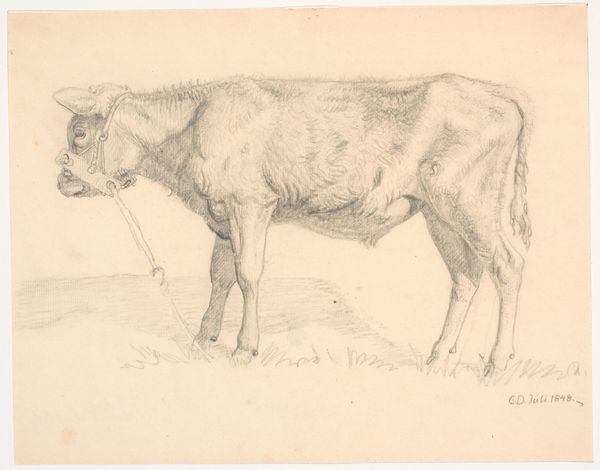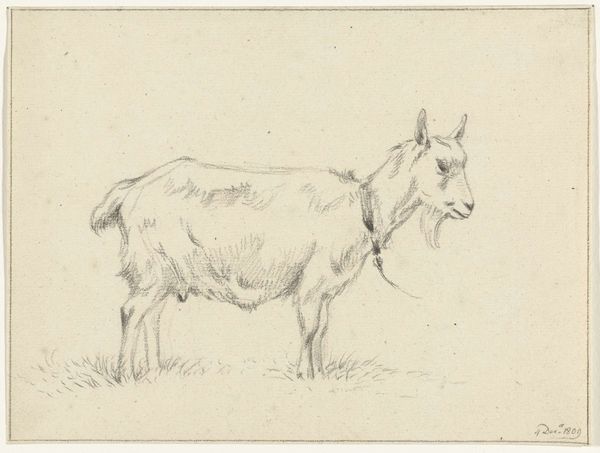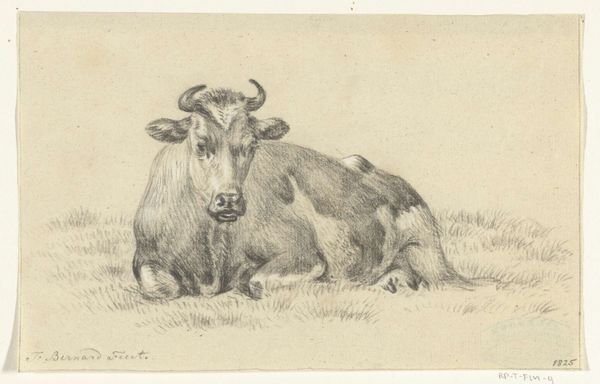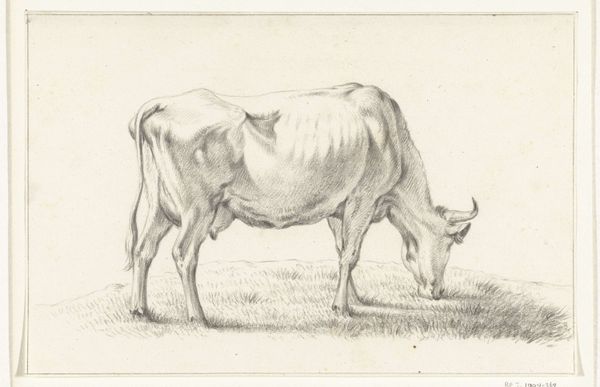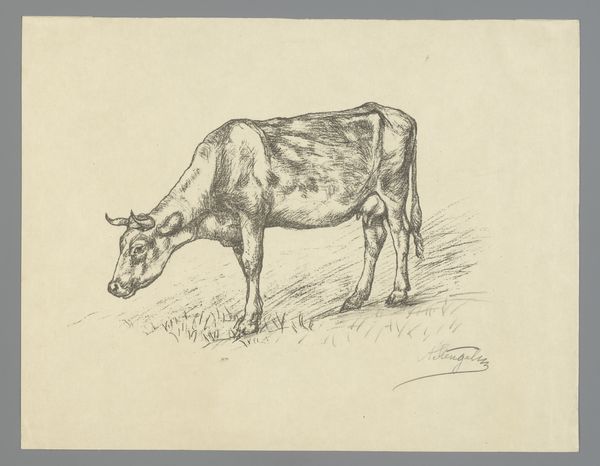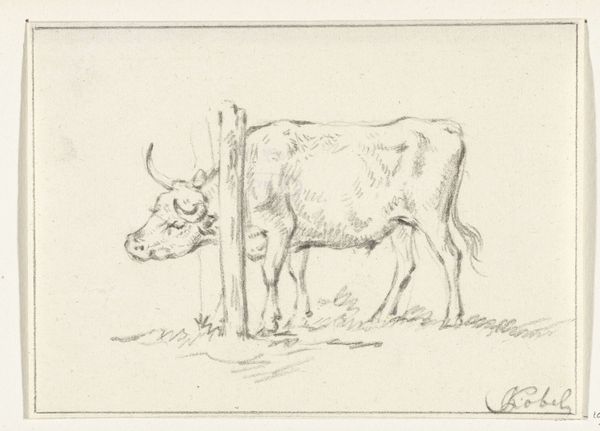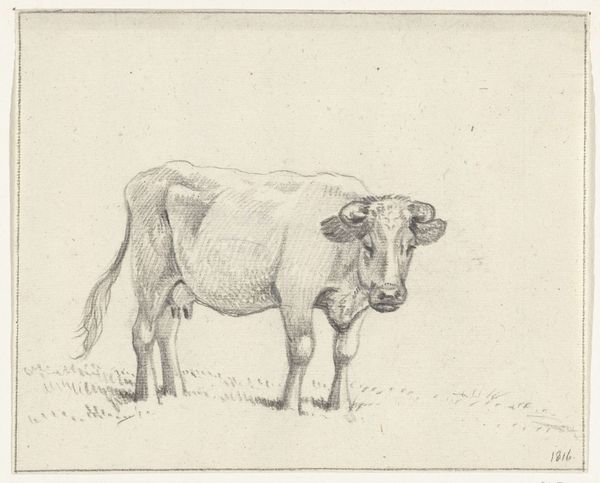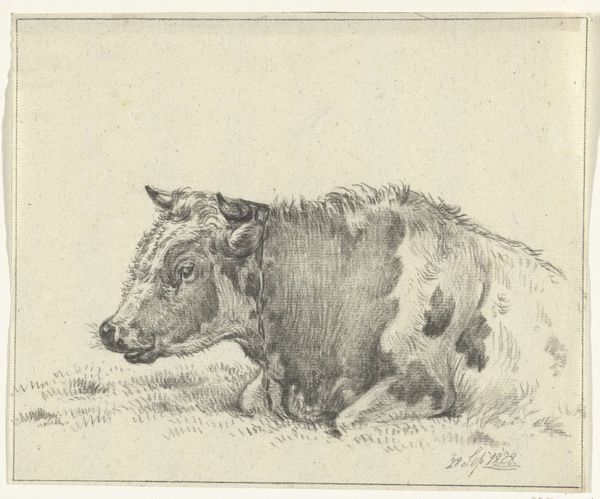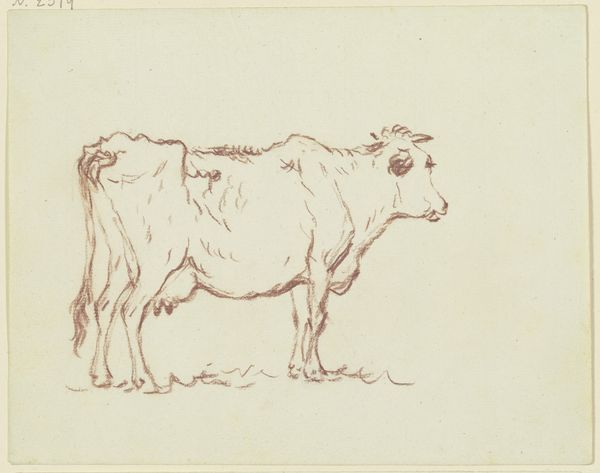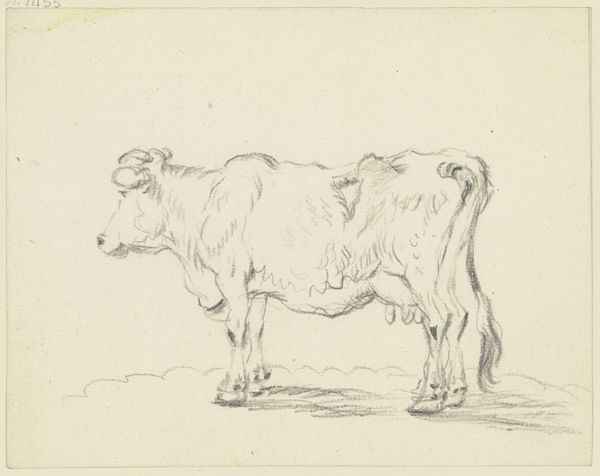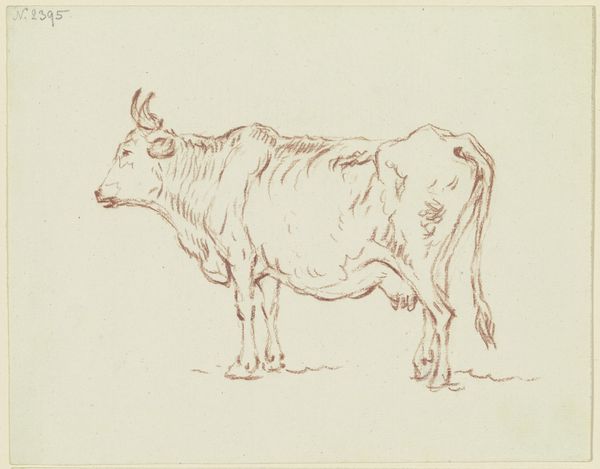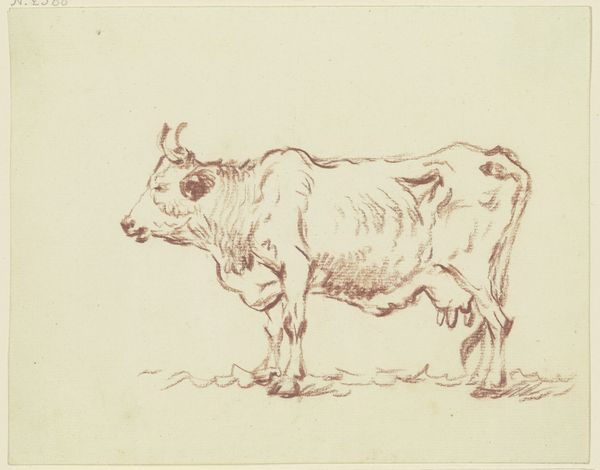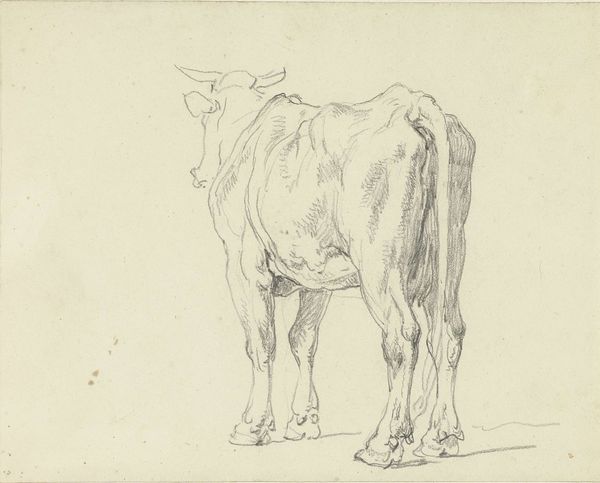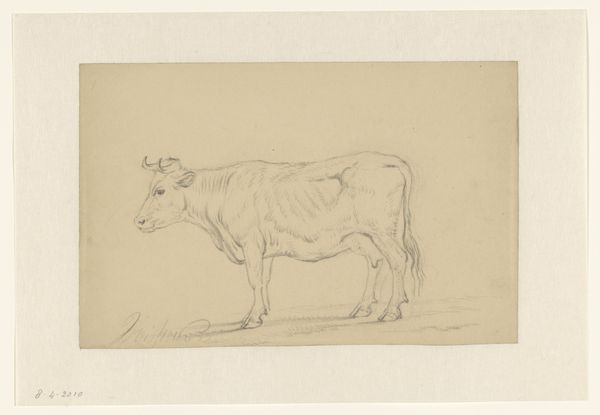
drawing, pencil
#
portrait
#
drawing
#
pen sketch
#
pencil sketch
#
landscape
#
pencil
#
sketchbook drawing
#
realism
Dimensions: height 128 mm, width 159 mm
Copyright: Rijks Museum: Open Domain
Editor: We’re looking at Jean Bernard’s “Grazende stier, naar links,” a pencil drawing from between 1775 and 1833. It’s a simple sketch, really, but I find the bull so dignified. What draws your eye in this piece? Curator: I’m struck by the seeming casualness that belies a powerful statement on labor and the pastoral ideal. Consider the historical context: Bernard was working during a period of immense social upheaval, where agricultural labor was being radically transformed. The bull, here, is not simply an animal; it represents the very foundation of rural economies and, by extension, societal structures. Editor: So, the drawing is not just a study of an animal? Curator: Exactly. It prompts us to think about the power dynamics inherent in agricultural societies, the role of animals as commodities, and the romanticized vision of rural life versus its often harsh realities. The bull, in its quiet act of grazing, embodies this tension. It is sustenance but also a subject, being reduced and displayed for its characteristics in a sketch. Editor: That's interesting. It challenges the sort of innocence I initially read into it. Are you suggesting it’s a commentary on social inequality? Curator: In a subtle way, yes. By depicting this bull, Bernard engages in a dialogue about the value and exploitation of labor. It's a portrait, but it's also a question: Who benefits from this animal’s existence? What does it represent in a changing world? Editor: I hadn't considered that a simple sketch could carry so much weight. It makes me think differently about how we value the things we take for granted, and how historical context really shapes art. Curator: Precisely. The everyday becomes extraordinary when viewed through the lens of history and power. It encourages us to critique, to analyze, and to recognize that art is never created in a vacuum.
Comments
No comments
Be the first to comment and join the conversation on the ultimate creative platform.
